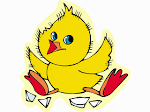Chicken Roosting boxes should be made from exterior grade plywood, and generally should not be stained. They work best when they are about 12 inches deep, 12 inches wide and about 12 inches tall on the side that mounts to the inside of the chicken coop. The chicken nesting boxes have a sloping top that slopes down to end up below the roosting perch. This is where chickens sit, and then lay their eggs into the chicken nesting or roosting box below.
One question that many backyard poultry flock lovers ask is how many hens can use the same chicken nesting box. Most people agree that you should provide one chicken nesting box for every four hens. Each box should be mounted to the inside of the chicken coop, located somewhere between 18 inches and 24 inches above the ground. This is also a convenient height to reach through an exterior egg door, to pick the fresh eggs that your obliging hens will lay.
Roosting perches need to be provided for the hens to sit on. These perches should also be no lower than 18 to 24 inches above the ground. Some folks use more than one perch, which could resemble a ladder that is leaning to the side. This allows the chickens to move around. The rule of thumb here is to try to provide at least 8 to 10 inches of perching area for each chicken.
The roosting perch should be mounted above one end of the chicken nesting box, an inch or so up, but close enough so that the hen will sit on the perch and lay her eggs in the box. The roosting perch should be made from wood, and most folks agree on a diameter of about 2 inches for regular size chickens and about an inch thick for bantams. Many folks actually use branches as roosting perches to help create a natural setting. Lastly, many chicken farmers in cold climates use flat 2x4 wood as perches to make the chicken sit flat on her feet, which helps keep her feet warm!
Chicken nesting boxes need a regular program for good sanitation. Start by using corrugated cardboard as a liner to fit the bottom of each nest. This makes it much easier to remove the lining material and to clean the nest on a regular basis. The cardboard should be replaced frequently, as the hens could peck though it or it could become soiled. If you prefer to use a longer lasting liner material for the bottom of your chicken roosting box, then some folks recommend using left over roofing shingles that are cut to fit. These will last much longer and are very durable. Some folks have concerns about using asphalt manufactured shingles due to possible health concerns. This becomes a personal choice.
Lastly, make sure to line the inside of your chicken nesting box with either wood shavings, straw or shredded paper. Some backyard farmers even use their old lawn clippings. If you choose to do this, make sure they are completely dried out and that you did not use chemicals on your lawn. These liner materials help to keep your eggs clean and reduce the chance of them being cracked. In the event that you do get a cracked egg that leaks, be sure to clean out the chicken nesting box completely and as soon as possible. Without good sanitation practices, bacteria can build up quickly in the nest and end up on new eggs. Always remove the nesting material after any egg breakage or if a hen uses the nest as a potty to avoid problems. Using the cardboard liner will stop a leaking egg from sticking to the bottom like glue.
To have the freshest eggs, straight from your backyard flock, try and gather eggs at least once a day, and keep them cool after they are gathered. Also, do not continue to reuse the same egg cartons as bacteria can build up and contaminate fresh eggs from this as well.
Subscribe to:
Post Comments (Atom)










No comments:
Post a Comment